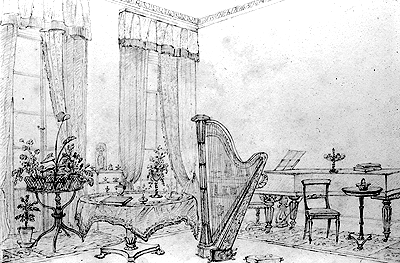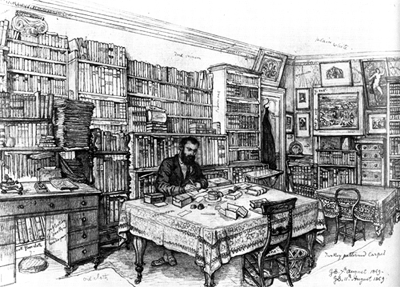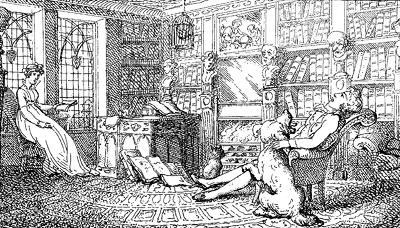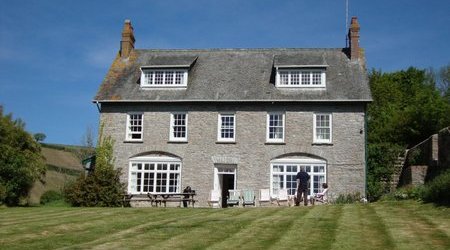drawing-room
"A room reserved for reception of company, and to which the ladies withdraw from the dining-room after dinner" (OED).
The drawing-room had feminine decorations compared to the other rooms in a home; which included classically tasteful furnishings and musical instruments" (Drawing rooms, The Regency Town House).




